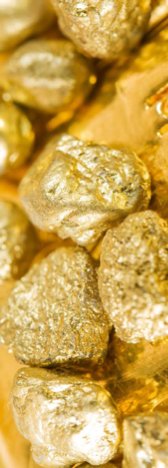Gravity gold recovery testwork service
In industrial gold plants, gravity processes are usually situated within the grinding circuit to process either the Hydrocyclone underflow or mill discharge. In bench scale testwork, gravity is routinely implemented immediately after grinding and prior to other beneficiation or extraction processes. Typically, the entire feed sample (usually 5kg) undergoes gravity separation as a batch via a centrifugal concentrator. Large masses of higher-grade material can also be processed via a shaking table (Wilfley or Gemini table).
In terms of centrifugal concentrators, ALS employs both the Knelson KC-MD3 (supplied worldwide by FLSmidth) and the Falcon L40 (Supplied Worldwide by Sepro Systems).
For recovered gravity gold concentrates, the two main treatment methods are mercury amalgamation and intensive cyanidation. Due to the tendency to over recover precious metals on a bench scale relative to full scale operations, mercury amalgamation is the preferred method as it generally will only recover the coarse/free gold, whereas intensive cyanidation will also extract fine grained or partially liberated gold particles, and thereby further overestimate the Gravity Recoverable Gold (GRG) content.
When a more comprehensive method of determining GRG is required, ALS conducts the LaPlante (2000) test that has become the industry accepted method for the determination of GRG, whereby 50-100kg of sample is passed sequentially through the Knelson concentrator at three successive grind sizes ranging from P80:850µm to P80:75µm. At each stage, the Knelson concentrate is collected and subjected to size by assay gold analysis. The final stage Knelson tailings is also subjected to size by assay gold analysis, and using these data an accurate GRG content can be determined.
It should be noted that these techniques can also be implemented for other naturally forming higher SG metals/minerals, such as Native Copper and Chromite.
 Search
Search
 English
English
 Login
Login
























































